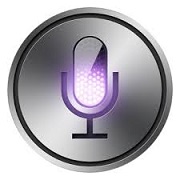What is a Voice Activated Assistant and What Does it Mean to Me?
 Voice activation of computer technology, beginning with using human speech to get a computer to understand a function you want it to perform and developing from there, has been a dream for many years but a practicality much more recently. The potential applications are almost innumerable, and one cannot exaggerate the helpfulness of technology that you do not need to sit directly next to, hold in your hand, or even touch. IBM’s Shoebox, introduced at the 1962 Seattle World’s Fair, was able to recognize sixteen spoken words and the digits 0 to 9. Now, nearly everyone carries a device with them daily that can perform dozens of tasks, if not more, via voice command.
Voice activation of computer technology, beginning with using human speech to get a computer to understand a function you want it to perform and developing from there, has been a dream for many years but a practicality much more recently. The potential applications are almost innumerable, and one cannot exaggerate the helpfulness of technology that you do not need to sit directly next to, hold in your hand, or even touch. IBM’s Shoebox, introduced at the 1962 Seattle World’s Fair, was able to recognize sixteen spoken words and the digits 0 to 9. Now, nearly everyone carries a device with them daily that can perform dozens of tasks, if not more, via voice command.
The modern revolution in voice-activated assistants arguably began when Apple released Siri on the iPhone 4S in October of 2011. The market now includes voice assistant programs on smart phones and tablets, now built into just about every one manufactured, as well as gaming systems, PCs, TVs, wearables, speakers, and nearly every make and model of tech device imaginable. Every major tech company (and most smaller ones) have their own version on the market. Apple has Siri, Google has Google Assistant, and Microsoft has Cortana. Amazon’s Alexa now dominates the market as the most popular voice assistant, built into products of all kinds from hundreds of different companies.
There seems to be no end to the many products created for everyday use that utilize voice assistance technology. Suffice it to say, reliable and quick professional tech help is becoming more and more necessary. Voice assistance tech includes smart home devices like thermostats, lights, security systems, robotic vacuum cleaners, doorbells, cameras, locks, wifi routers, and much more. It also includes but goes far beyond music streaming services and online radio, event ticketing, online searches for virtually anything. In fact, Amazon boasts that Alexa can perform over 15,000 “skills.” Also in development are professionally specialized voice activation programs like Eva, a voice assistant that can simplify record-keeping for health care providers.
Of course, this technology has opened the door for all sorts of issues requiring professional help with regards to privacy and data security. This is something that tech companies are working to address, but as technology grows, so too do the threats that accompany it. For now, voice activated assistants continue to progress rapidly and are one of the best examples we have of the development and growth of machine learning. It is easy to see why it has become such a demand, given that there are so many tasks easier to complete without hands and can help people with disabilities as well as those too busy to handle the many things our technology can. Soon, it seems, there will be very little we cannot achieve via voice activation technology.
Filed under: technology



